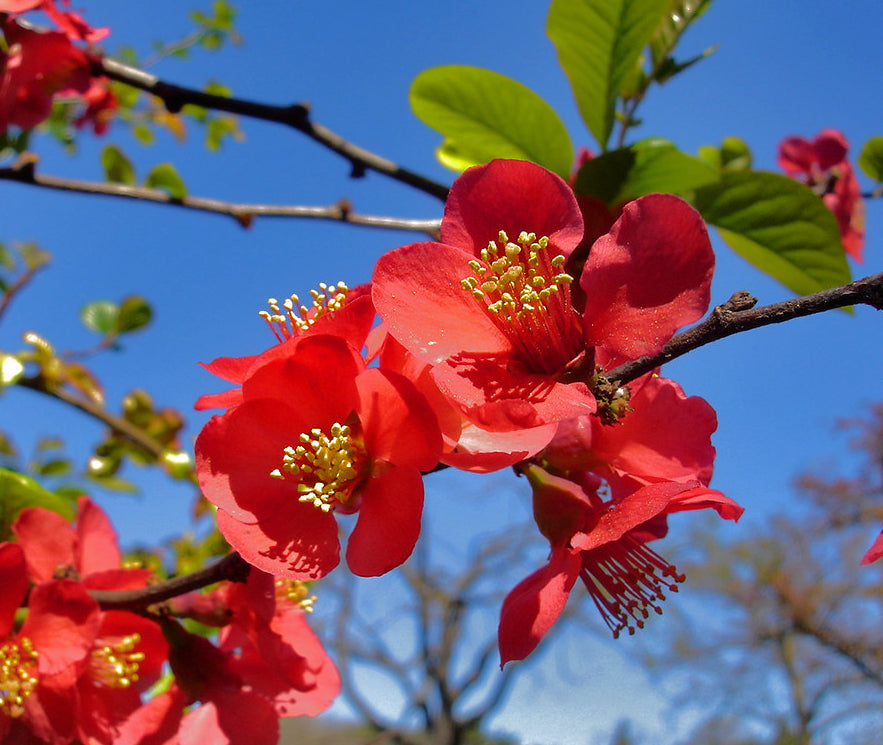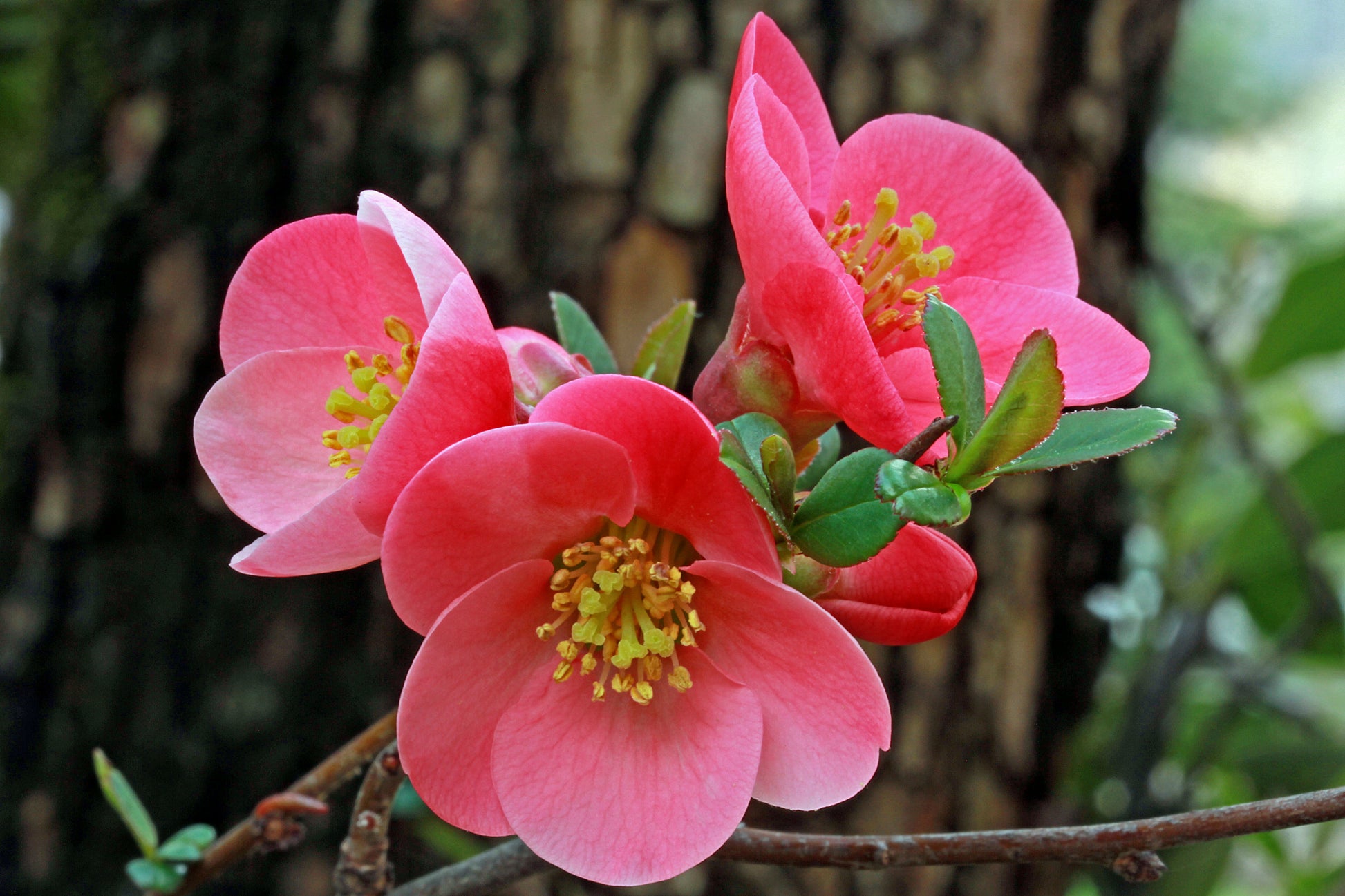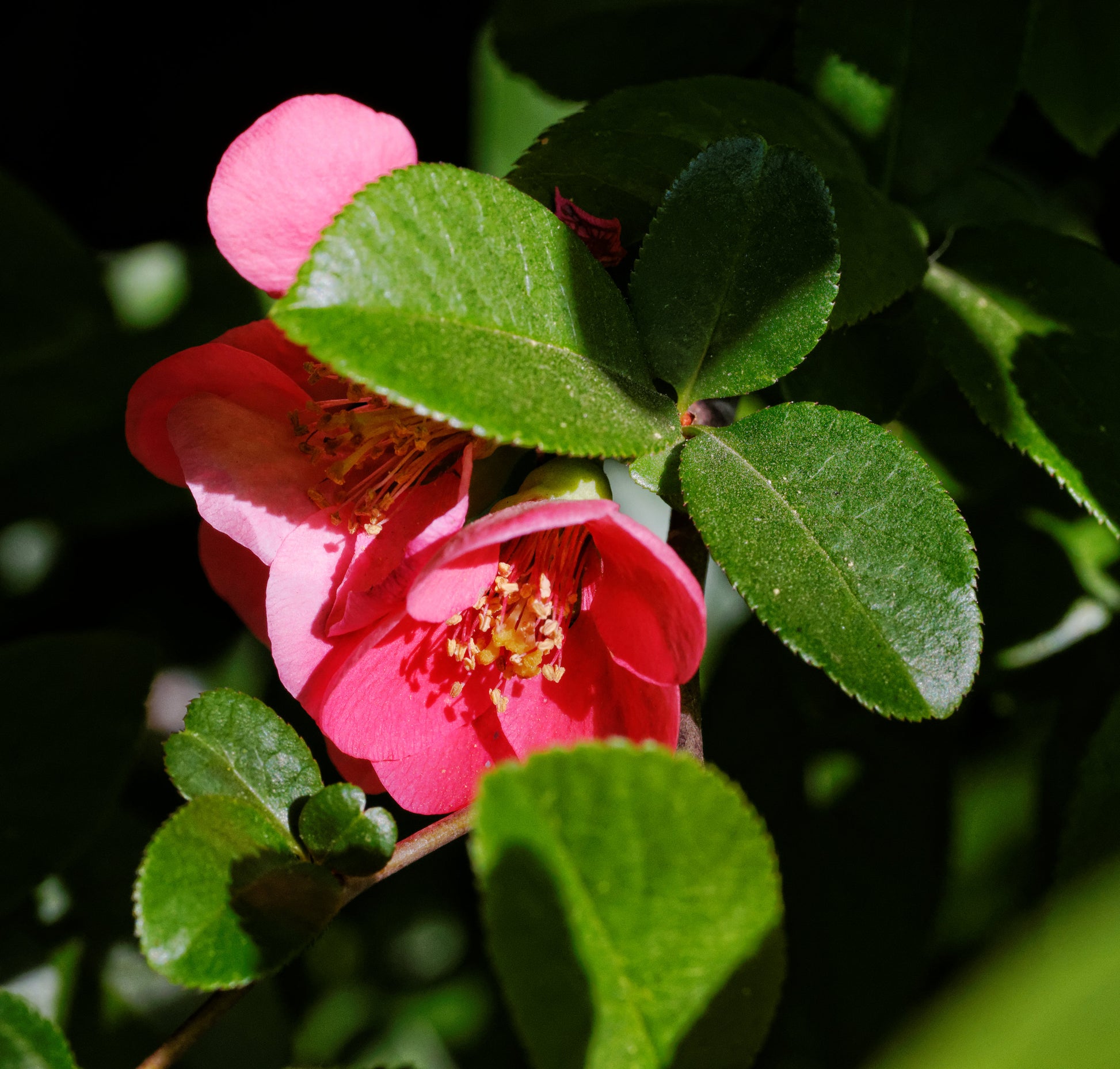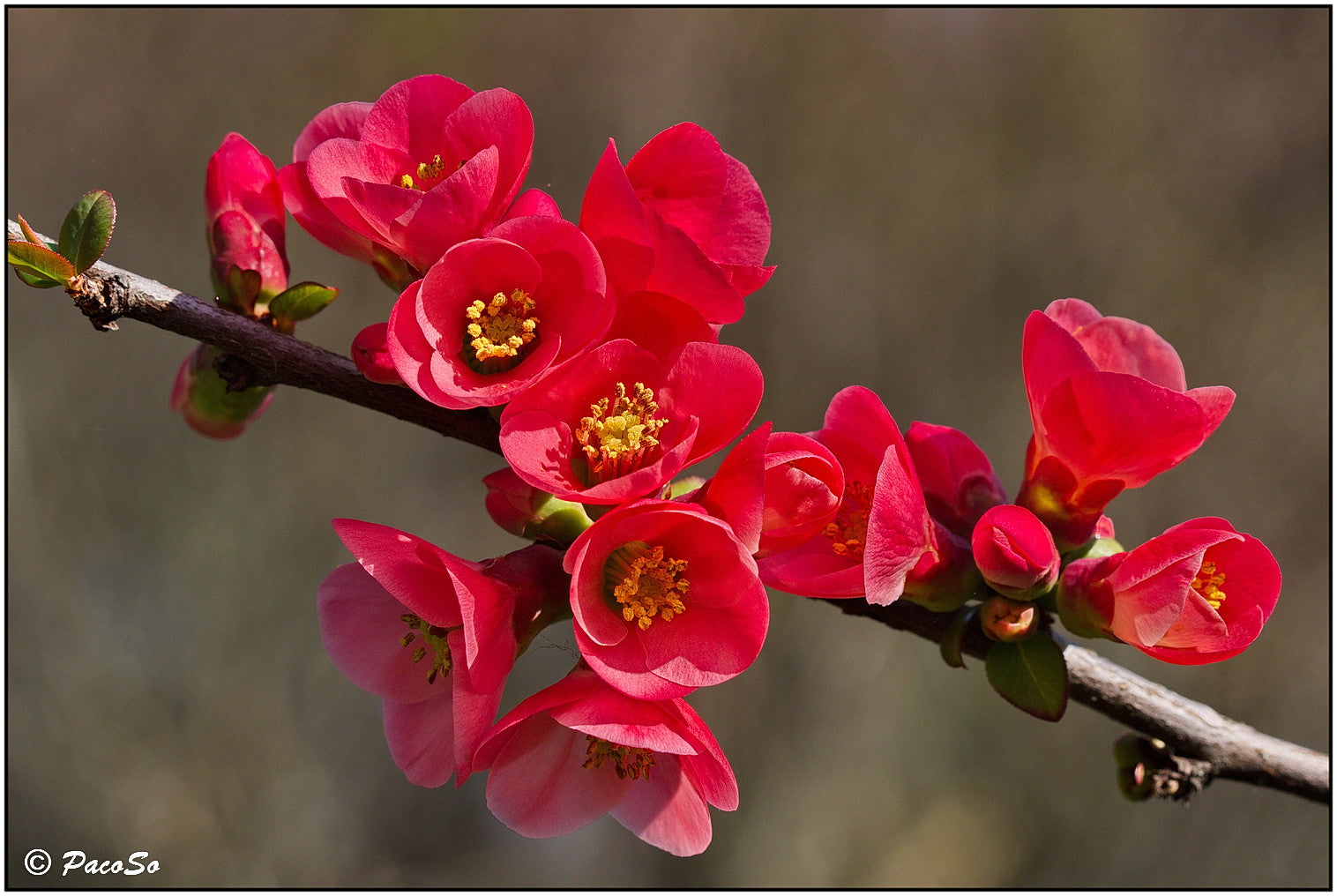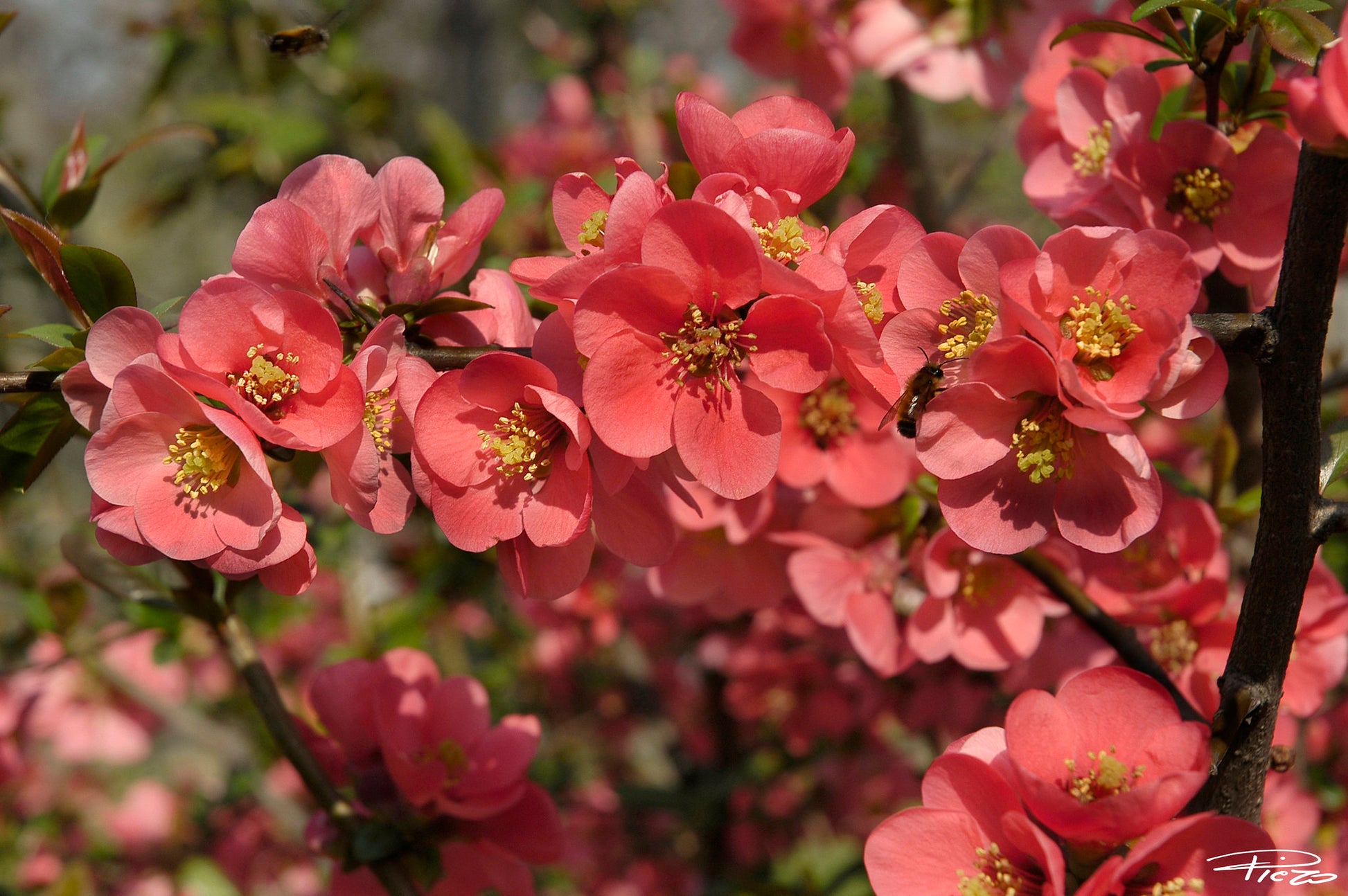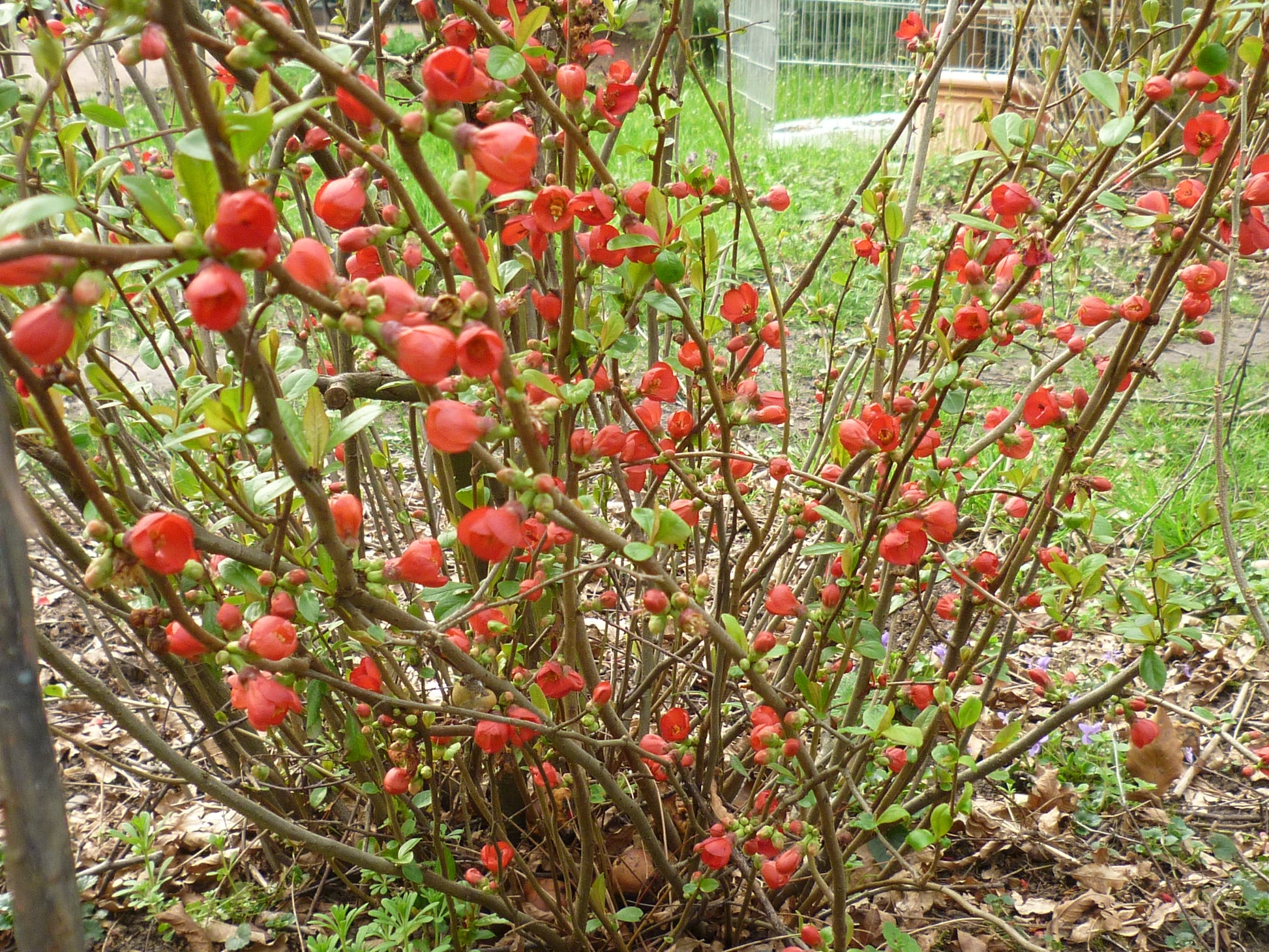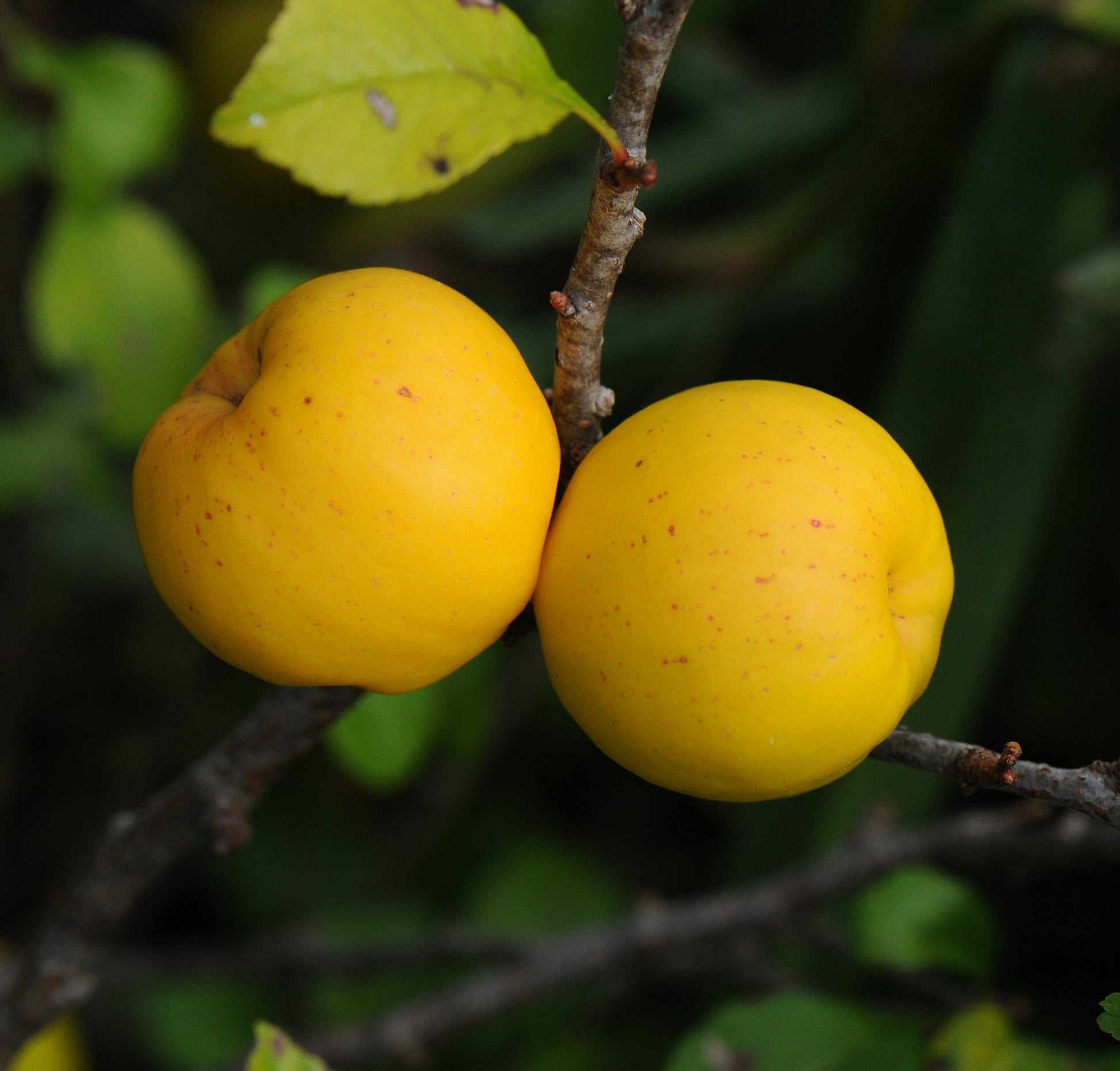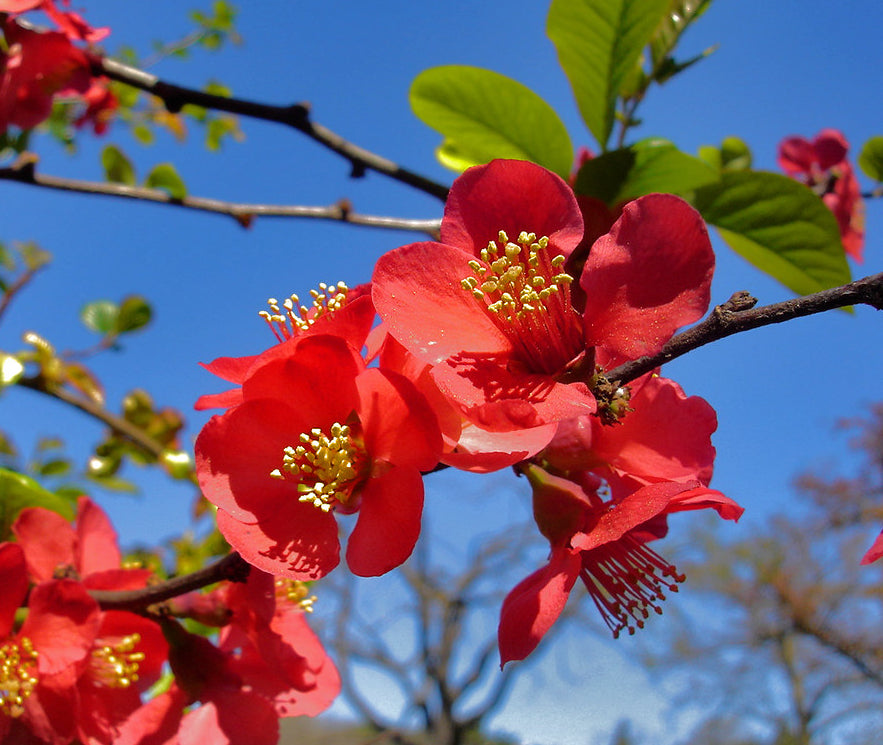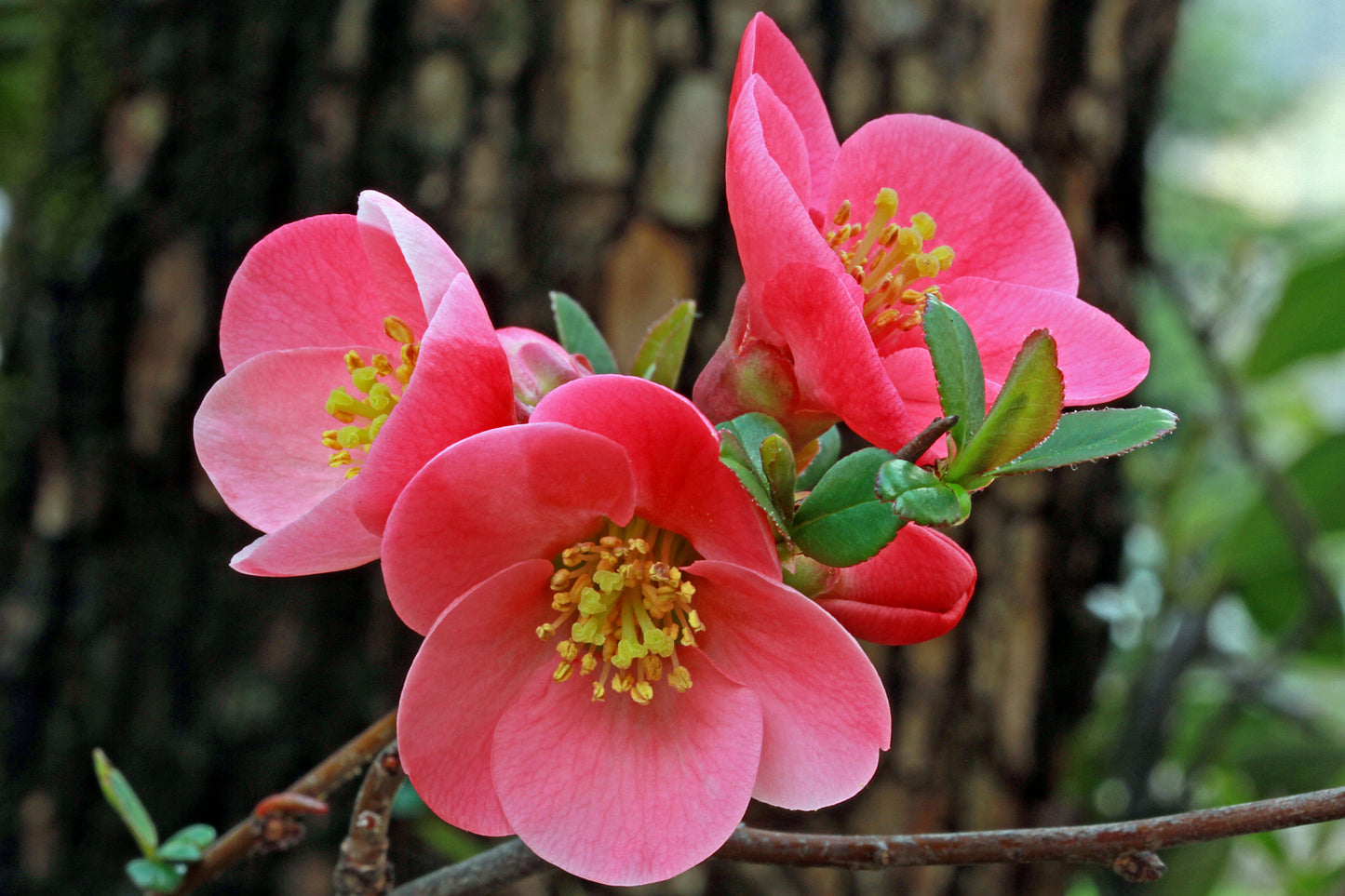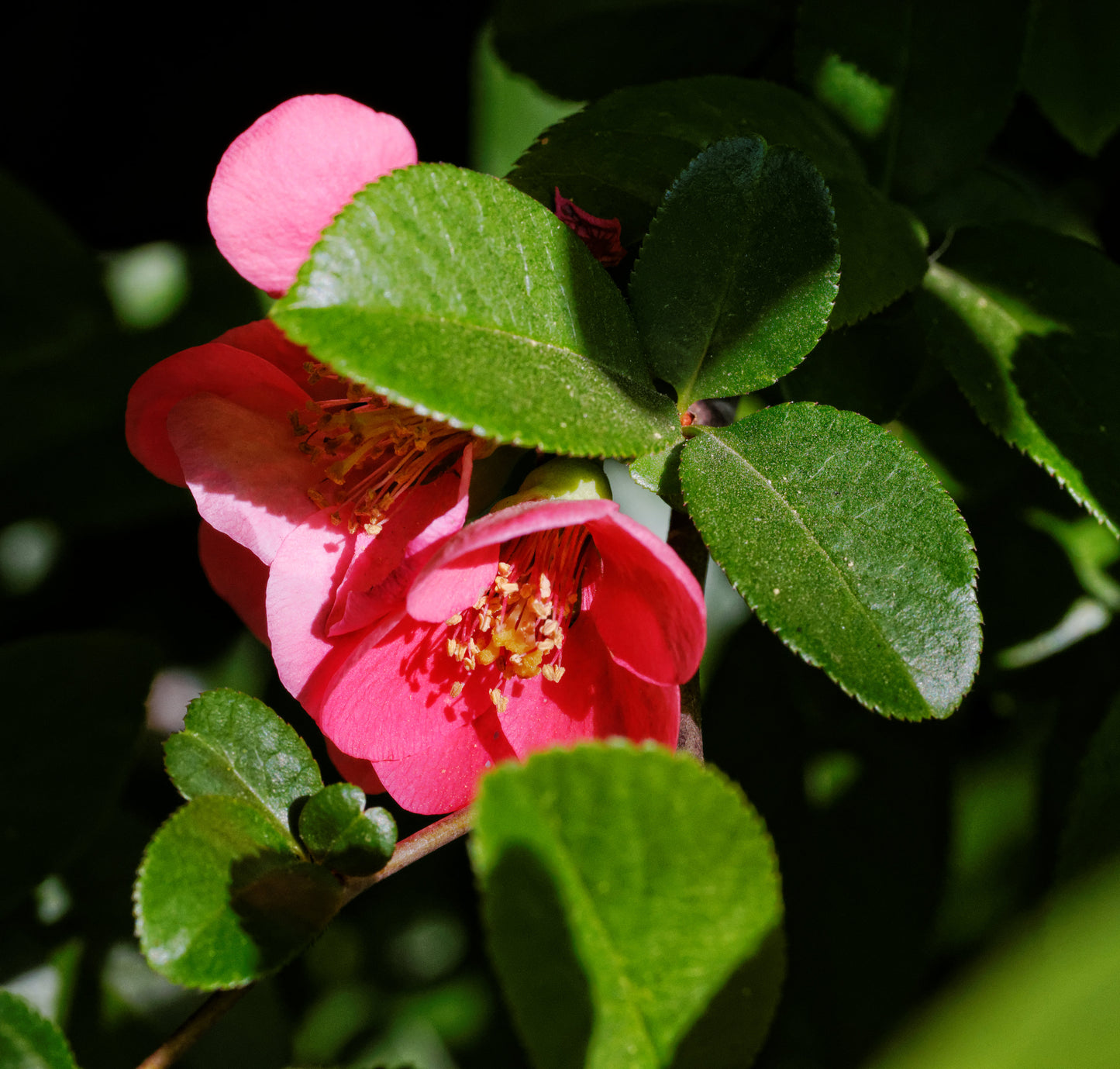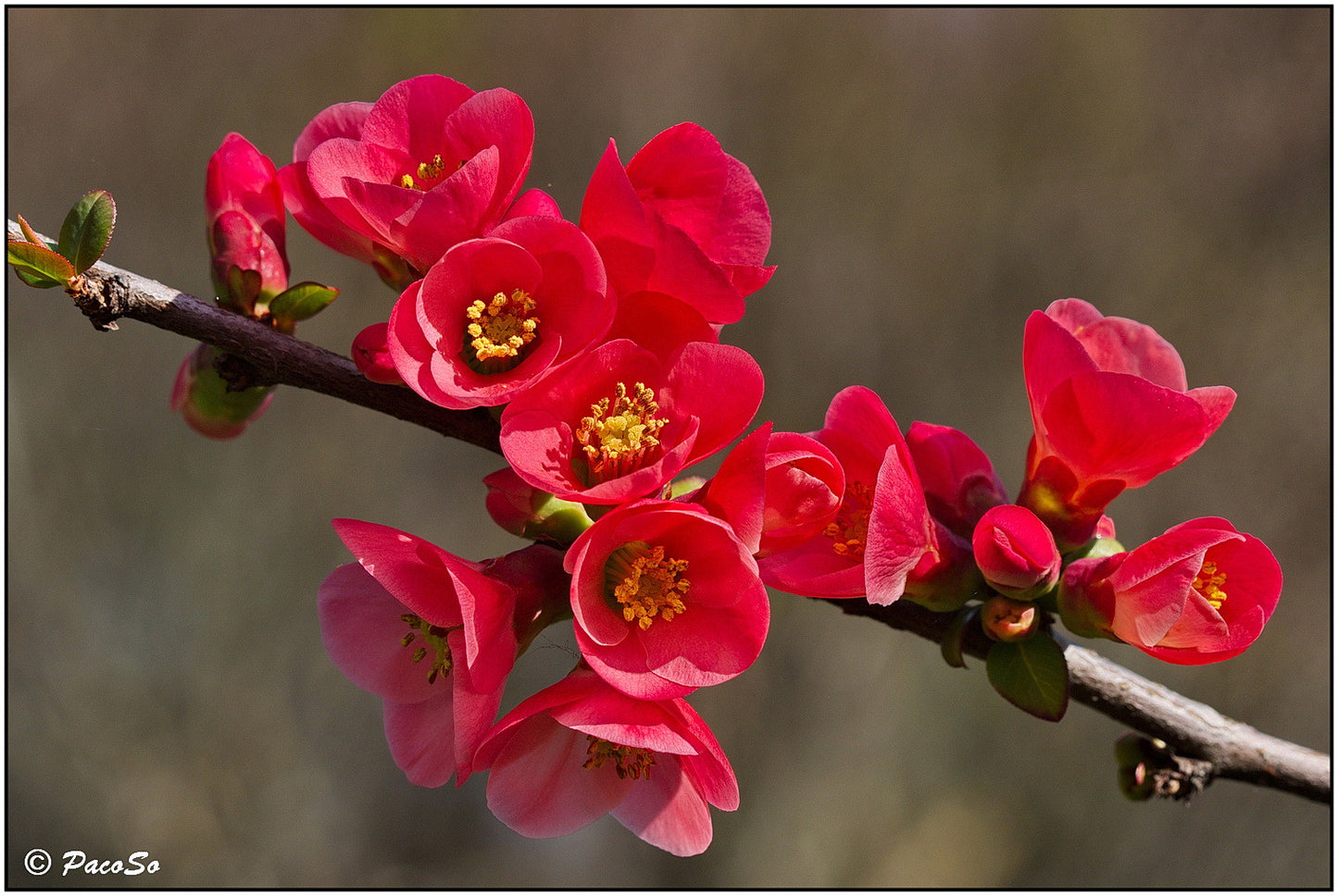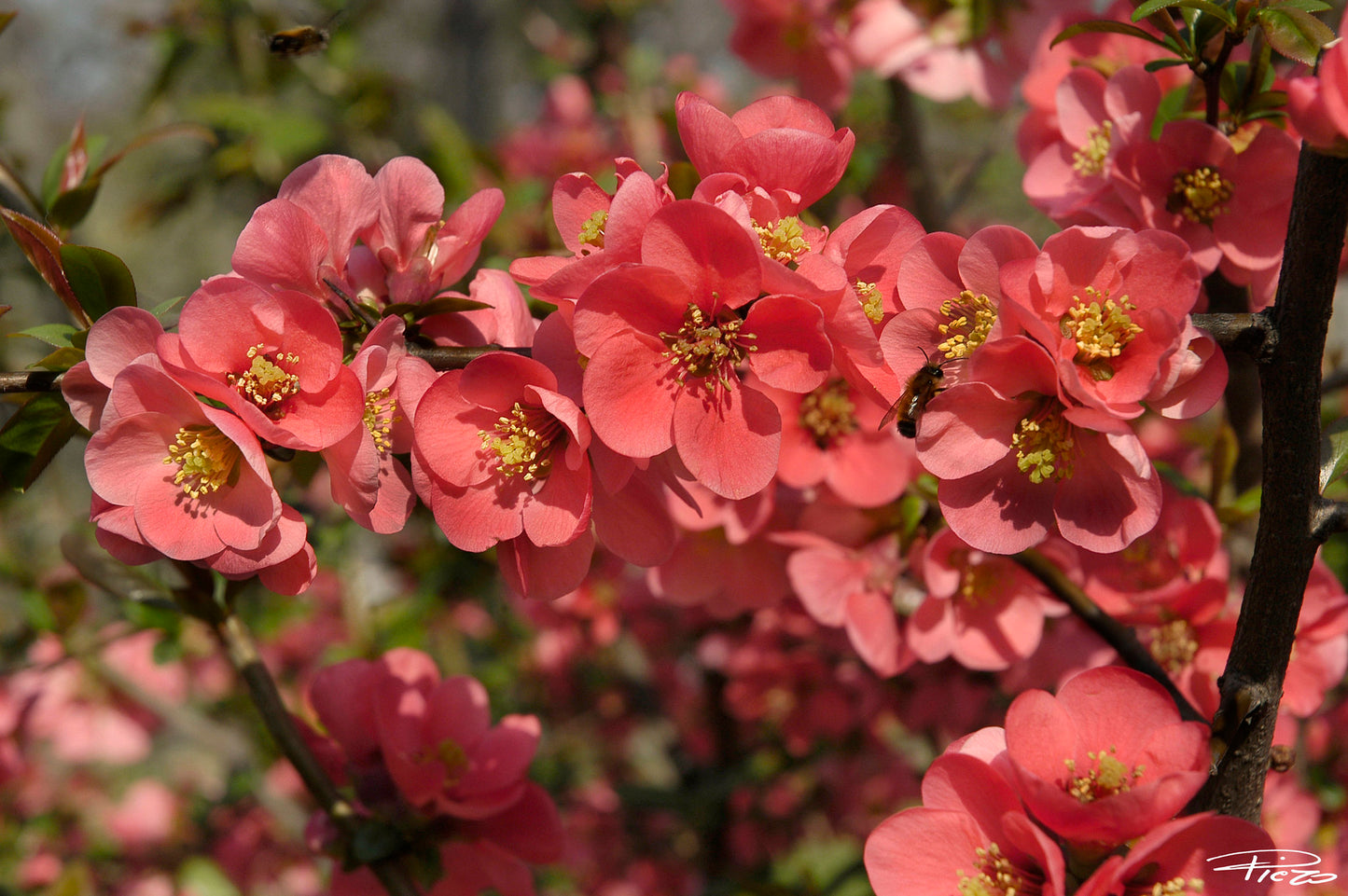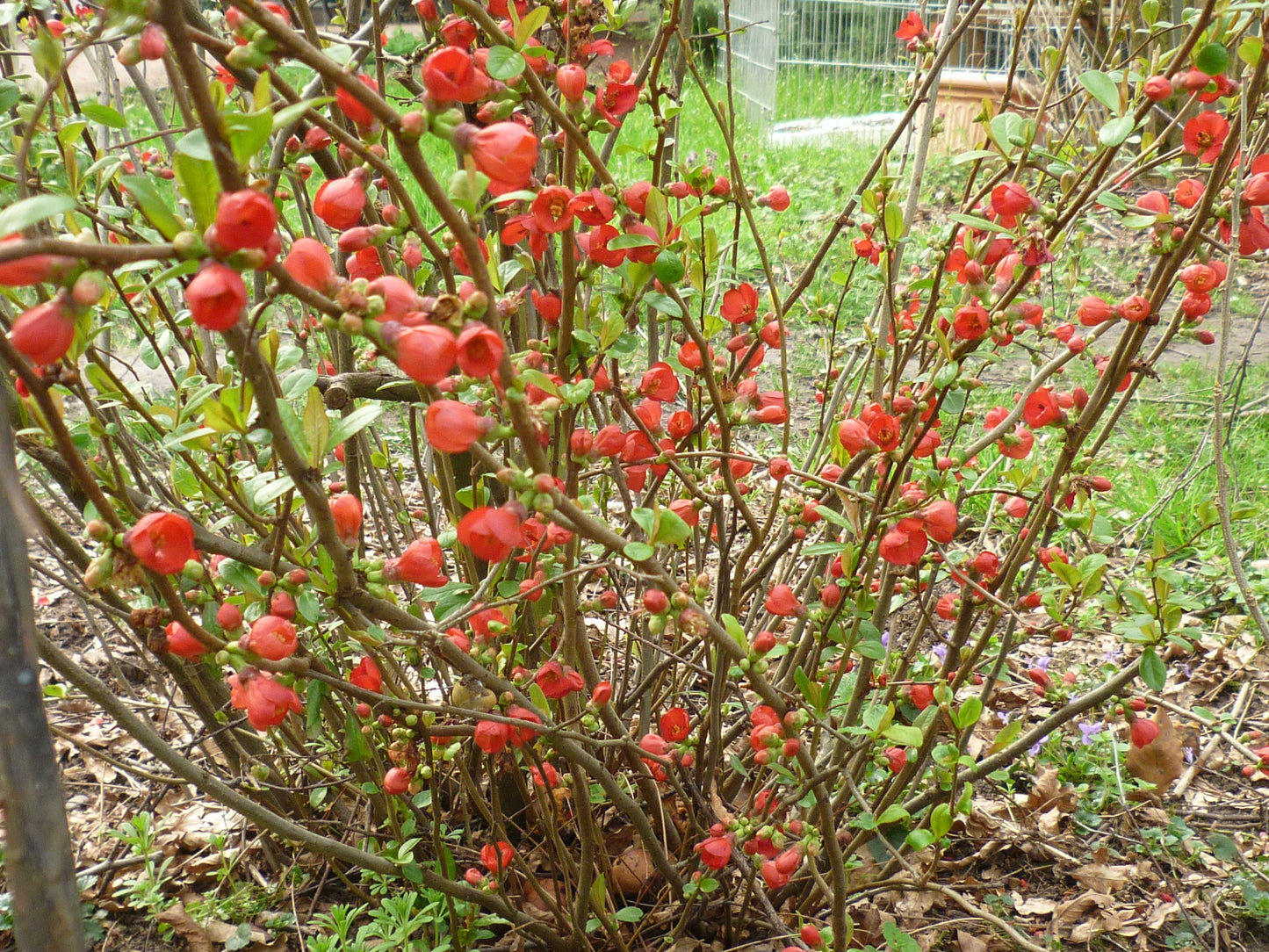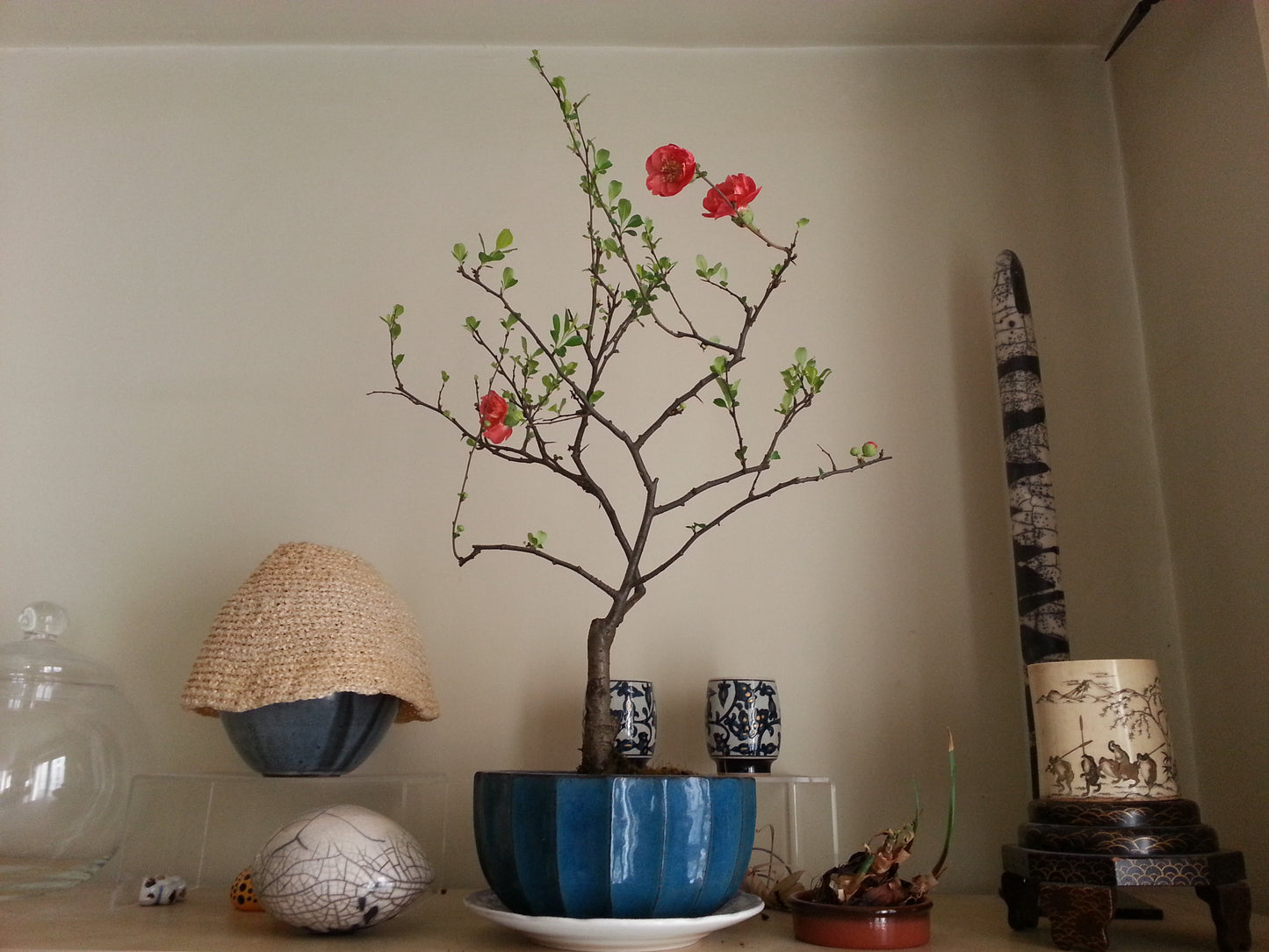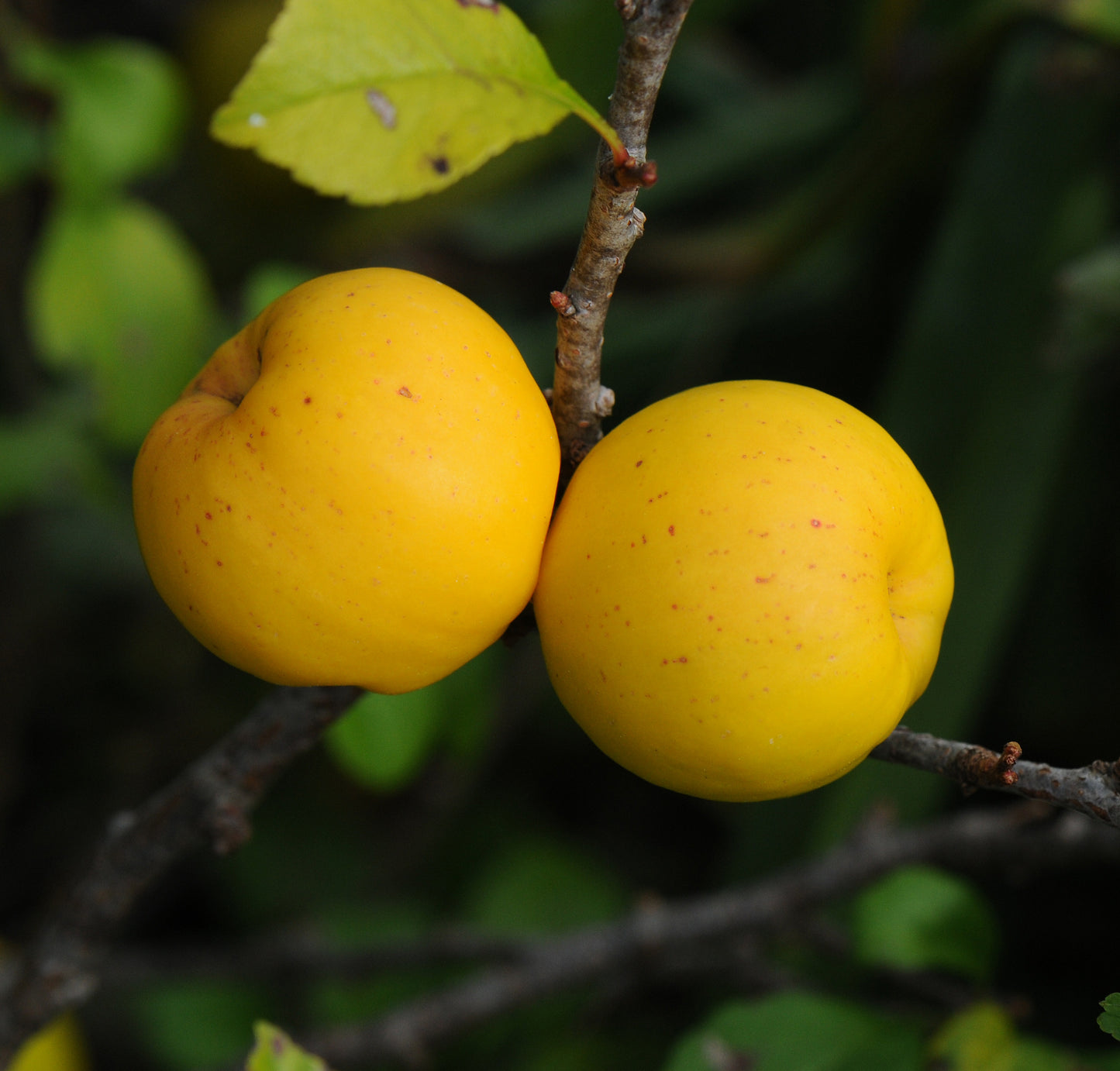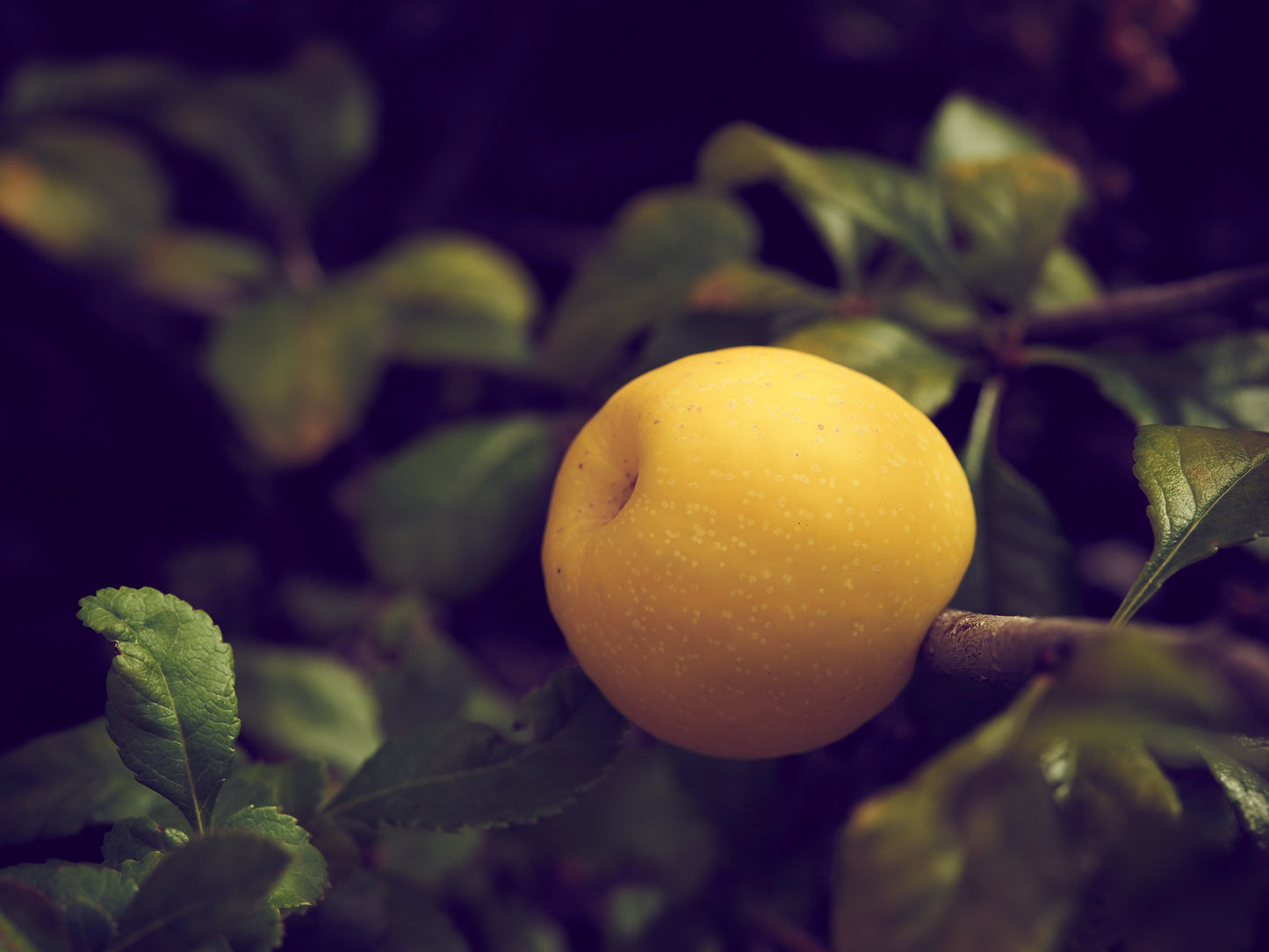Floridaseeds
Japanese Quince Chaenomeles japonica 100 Seeds
Japanese Quince Chaenomeles japonica 100 Seeds
Couldn't load pickup availability
Chaenomeles japonica, commonly known as Japanese quince or flowering quince, is a deciduous shrub native to Japan, China, and Korea. It belongs to the Rosaceae family and is known for its beautiful flowers, ornamental fruit, and drought tolerance.
Japanese quince typically grows to a height of 1-3 meters (3-10 feet) with a similar spread. It has a dense, spreading habit and often forms thorny thickets. The branches are adorned with glossy, dark green leaves that turn yellow in the fall before dropping.
The most striking feature of Chaenomeles japonica is its flowers, which appear in early spring before the leaves emerge. The flowers are solitary or clustered, ranging in color from white to shades of pink, red, or orange, depending on the cultivar. They are cup-shaped and have five petals, creating a visually stunning display.
After flowering, Japanese quince produces small, apple-like fruits called quinces. These fruits vary in color from yellow to green and are edible but are typically quite tart and astringent when raw. They are more commonly used in cooking, where they can be made into preserves, jellies, or sauces after cooking and sweetening.
Japanese quince is adaptable to a wide range of soil types but prefers well-drained, slightly acidic soil. It can tolerate drought once established but benefits from regular watering during dry periods. This shrub thrives in full sun to partial shade and is relatively low-maintenance, requiring minimal pruning to maintain its shape and remove dead or damaged branches.
Chaenomeles japonica is popular in garden landscapes for its early spring blooms, ornamental fruit, and wildlife value. It attracts pollinators such as bees and butterflies and provides food and shelter for birds. Additionally, it is often used as a hedge, border plant, or specimen shrub in garden designs. Hardy in zones 5-9.
Growing Instructions
The seeds have a period of dormancy. They can be planted outdoors in the fall or winter for spring germination or they can be cold stratified to simulate winter conditions and to break their dormancy at any time of the year.
- Place the seeds in a plastic bag and seal it. Store the bag in a refrigerator for 4-6 weeks.
- The seeds like moist, well-drained soil. Fill a pot with a mixture of half potting soil and half sand or vermiculite.
- Sow the seeds on the soil and cover them with a thin layer of soil.
- Water the container.
- Put the pot in a warm, sunny area.
- Water the pot regularly so that the soil is moist but not wet.
- The seedlings can be transplanted when they are a few inches tall.

